Getting to know you
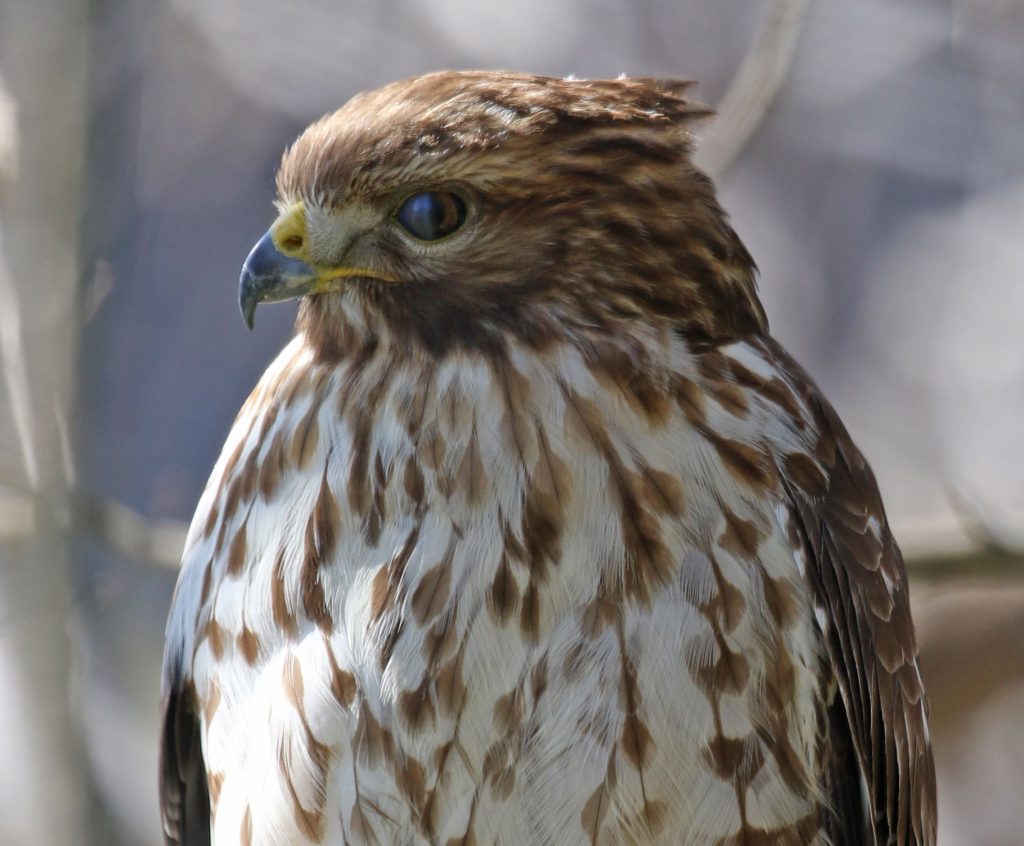
There’s a new kid on the block. Literally. A juvenile red-shouldered hawk has been a pretty constant presence on the north side of the bayou just west of the Jackson Hill bridge. Last week, he or she decided to sit in the open at eye level and not fly away even if I got within 15 feet of him. This was such a patient bird that I was able to wave passersby over to share such a good look at this lovely bird.
I was very much hoping to catch a photograph of the bird as he lifted off, but lifting off wasn’t on his agenda. Sitting still was. He eventually did fly to a higher perch nearby and then again to a low thicket where he once again placidly settled in.
All of this was slightly surreal. For one thing, birds just don’t usually let you hang around close to them. He was so relaxed about everything, it made me wonder if this was last year’s nestling. Perhaps he’s been in the Park his whole life.
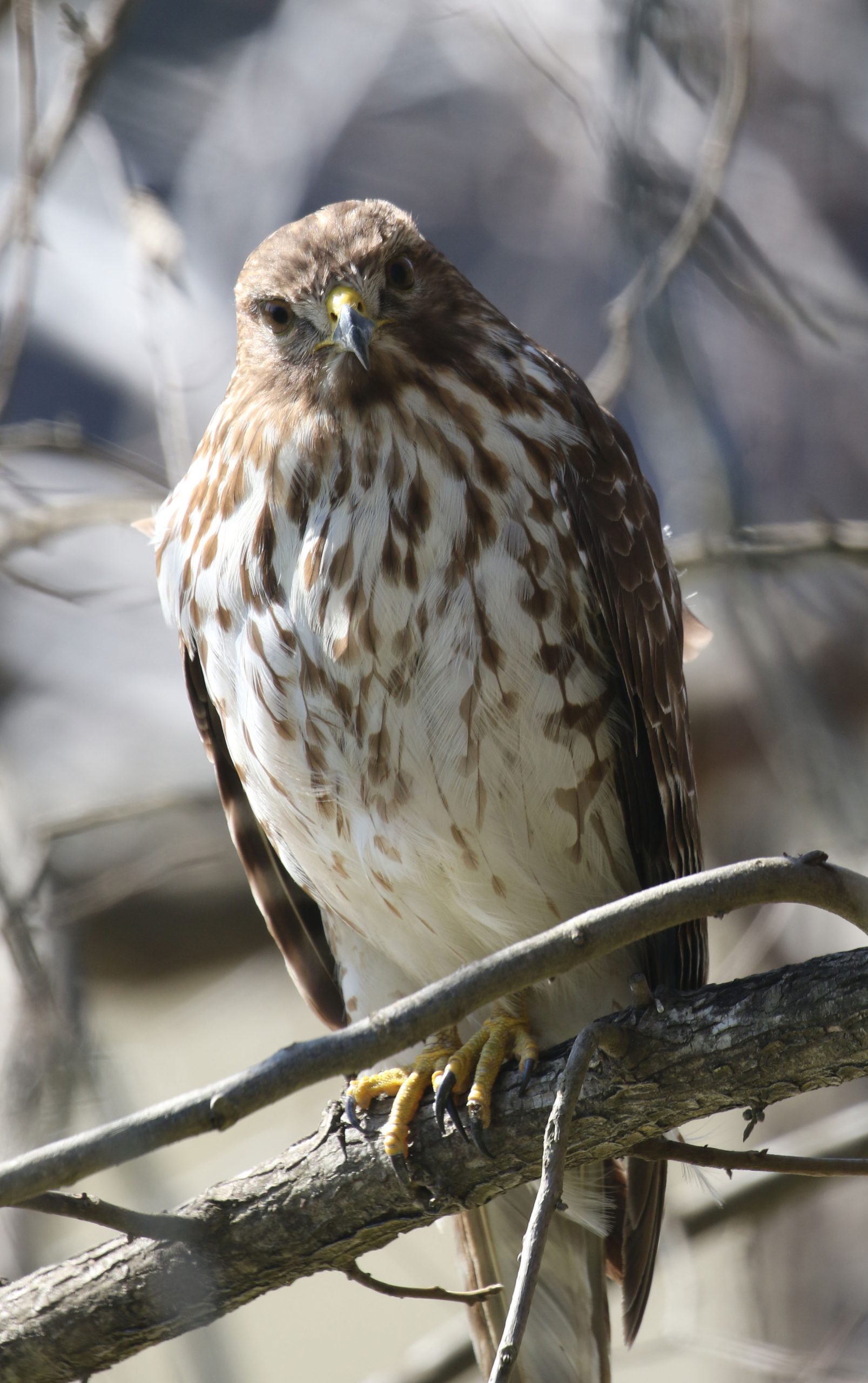
But that is really unlikely because juvenile red-shoulders usually move miles away from their birth territory (the nest is just a quarter-mile west). And half of them don’t make it to their first birthday.
I know this hawk is less than 18 months old because he is in juvenile plumage. After birds hatch, they quickly replace their downy fluff with functional feathers. For some species, mostly hawks, gulls and wading birds off the top of my head, the first set of feathers looks only somewhat or nothing like the adult plumage.
Most birds molt all their feathers over the course of a year. This ensures that feathers that are broken or worn can be replaced. For birds with juvenile plumage, they will eventually molt into adult plumage during their first or second year. Whenever their molt cycle comes along.
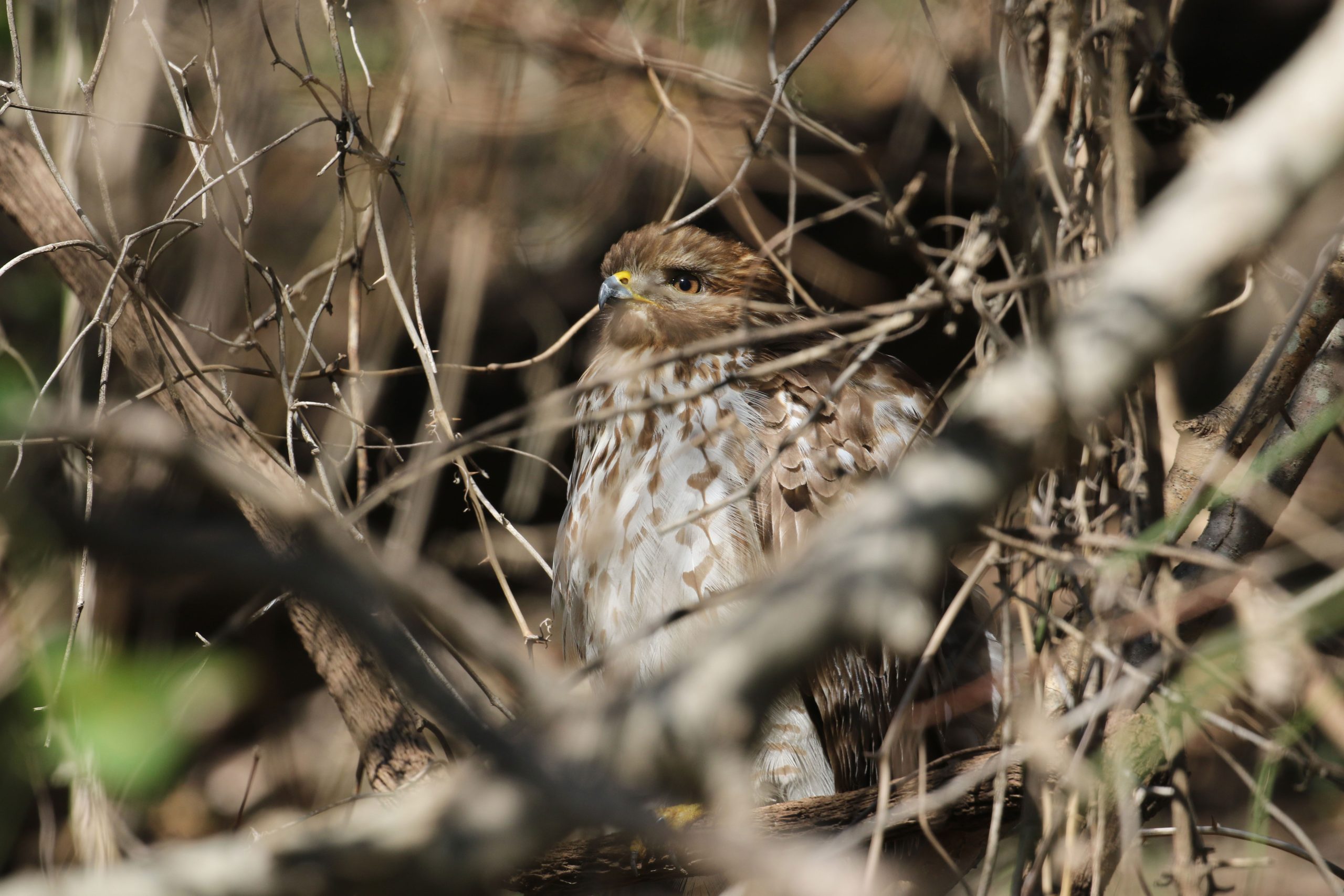
I was perplexed by the series of low perches. Red-shouldered hawks do usually hunt from a perch, spotting prey on the ground below and swooping down on it. But these were really, really low perches. Neither got him more than six feet off the ground and he wasn’t three feet off the ground in those brambles.
In our Park, red-shouldered hawks eat mostly lizards. Anole lizards most likely. I’m somewhat confident in this because the other common prey of this species aren’t common in our Park. We don’t have voles and chipmunks. Also, when I watched our pair feed their chick, the only identifiable things I saw were lizards. Lots and lots of lizards.
So maybe you can successfully hunt lizards just a few feet off the ground. Or maybe he was just goofing around.
The main rule for baby hawks is that they are idiots. For proof, a blog post from two years ago about a juvenile hawk who tried to catch a juvenile grackle. On foot. There’s video. And reviewing the page to make sure I linked correctly, I have realized that despite my identifying the juvie hawk as a red-shouldered, it is a juvenile coopers hawk. I will fix the post. For the birders among us, the thing that jumped out at me now that I didn’t know to look for earlier are those eyes. Juvenile coopers hawks have arresting yellow circles in their eyes. One look and I knew I had gotten the ID wrong.
I have wondered for a while how many pairs of red-shouldered hawks the area could support. We have a pair who nested last year near the Shepherd bridge and another pair nests in the Arboretum. For a long time I wondered if these were the same birds, but last year, I was looking at the Park pair while on the phone with someone looking at the Arboretum pair, so that’s finally resolved.
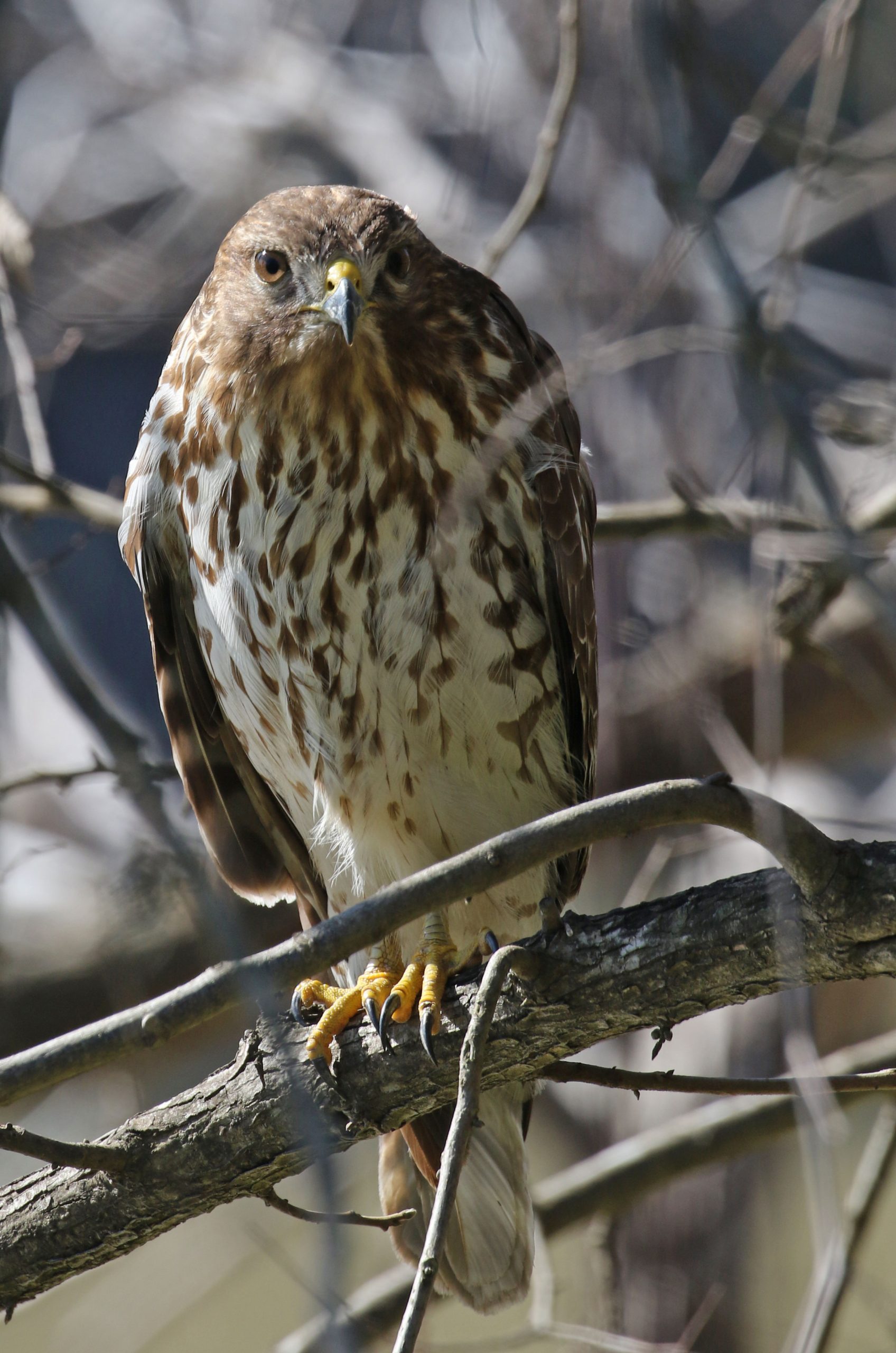
I think there is a third pair, as well. This pair is usually found perched on top of the residential building across from the Buffalo Bayou Park Visitor Center at the Cistern. The staff know them well and people on last month’s eco walk got to see that pair demonstrate mating behavior. My walks are usually not X rated.
This pair frequents that area so often that Park staff have more or less adopted them.
The number of pairs of red-shouldered hawks any area can support is a function of how much food can be found. On average, southern red-shoulders need 250 acres of usable habitat. I used a mapping tool to encircle all the usable habitat from Sabine to the loop. This includes all of our Park, all of Memorial Park, Glenwood Cemetery and much of River Oaks. In total, there are over 2,500 usable acres. So we can support more than two or three pairs of red shoulders around the Park.
I was wondering about all this because this juvenile is probably too young to mate this year (but it’s not unheard of), but he is spending a lot of time in what was once someone else’s territory.
I have seen this hawk in this basic area three times in the last month. That strongly suggests that it is living there. I don’t know if there is room for another pair so close to the first, or it’s possible something happened to last year’s pair. Stay tuned for the continuing drama that is our Park.
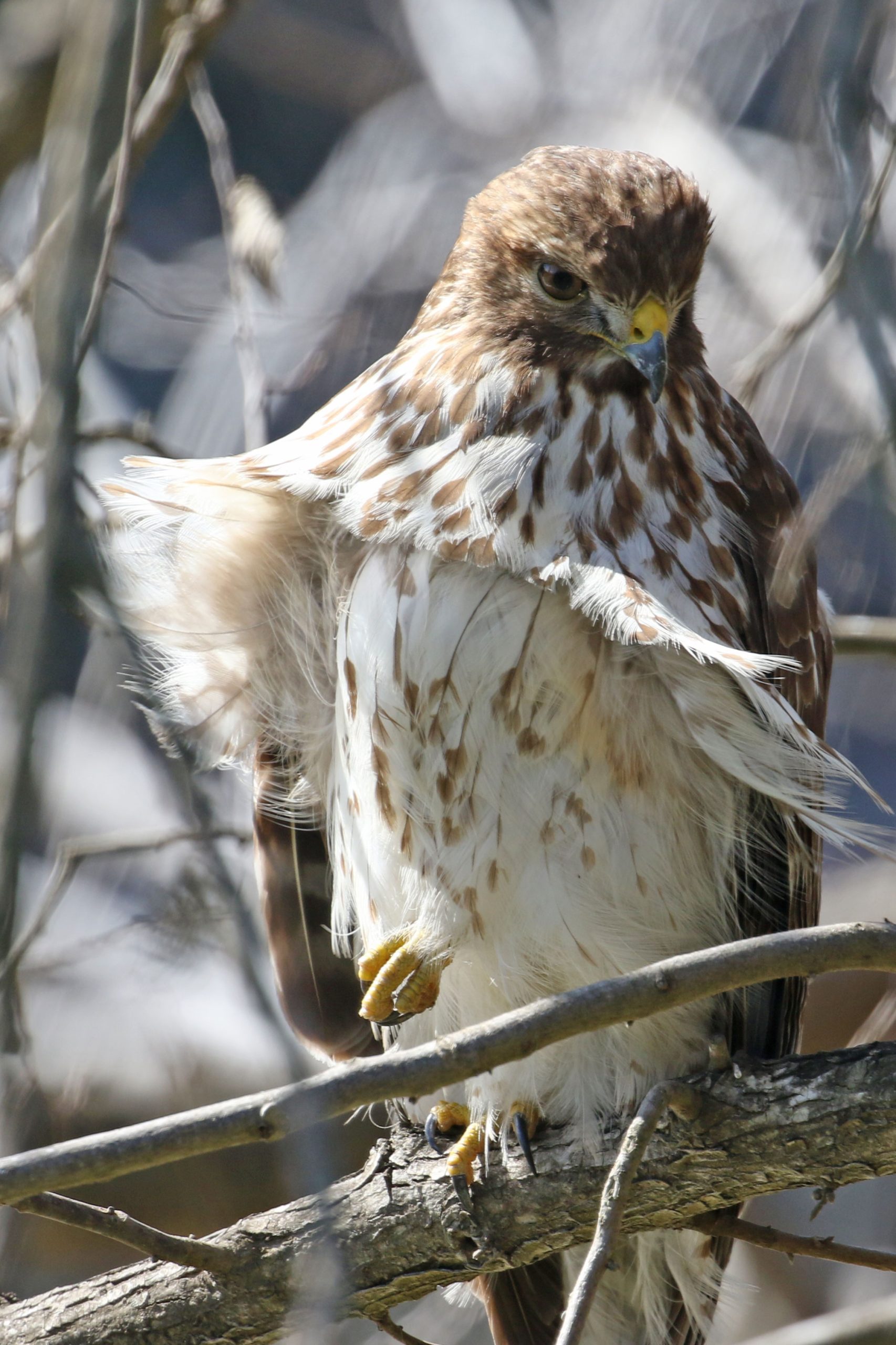
By the way…
This is the third hawk I’ve seen recently ball up their foot and hug it to their breast. The first one I saw, I thought the bird might be injured. By the third, I figured it out. All perching birds are constructed so that when they bend their leg, their claws automatically snap closed. This is really useful for not falling out of trees when sleeping.
I think that birds probably tuck a leg close to keep it warm (I’ve only seen this on cold days); the act of tucking it close automatically balls up the claw.
By the other way…
The blog will be on vacation for the next few weeks. Look for us next the second week of March.

